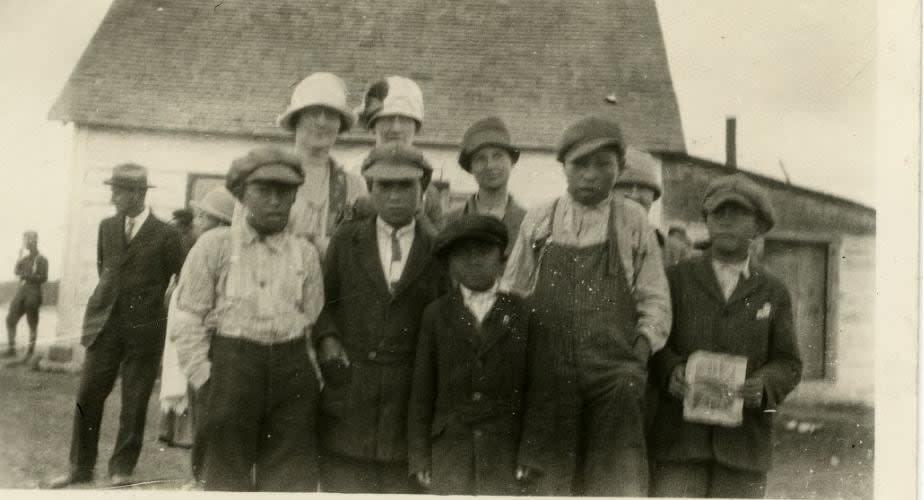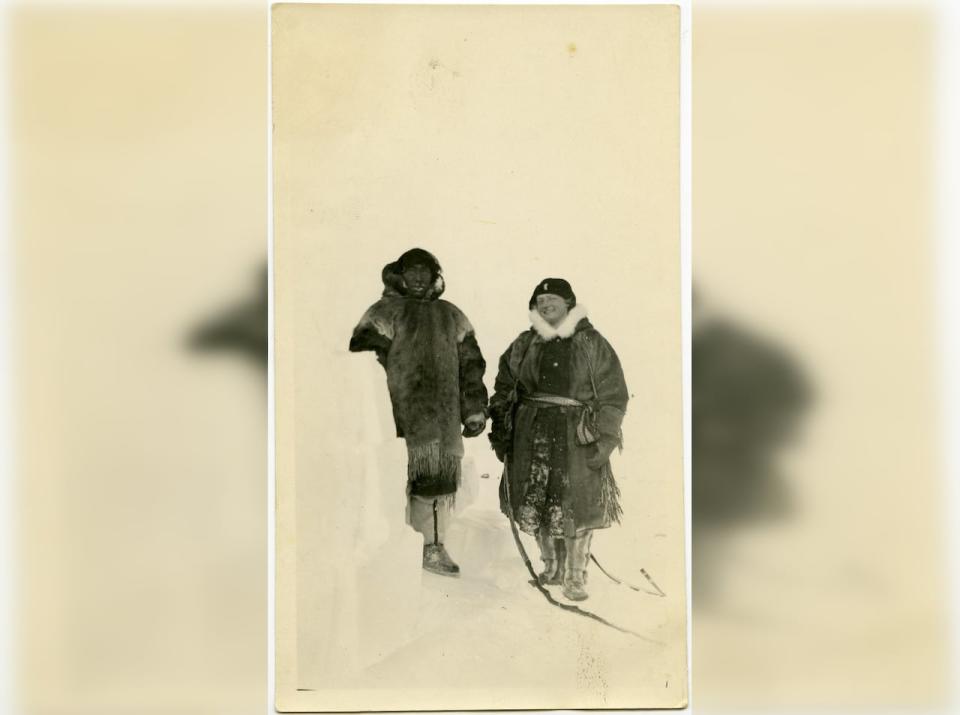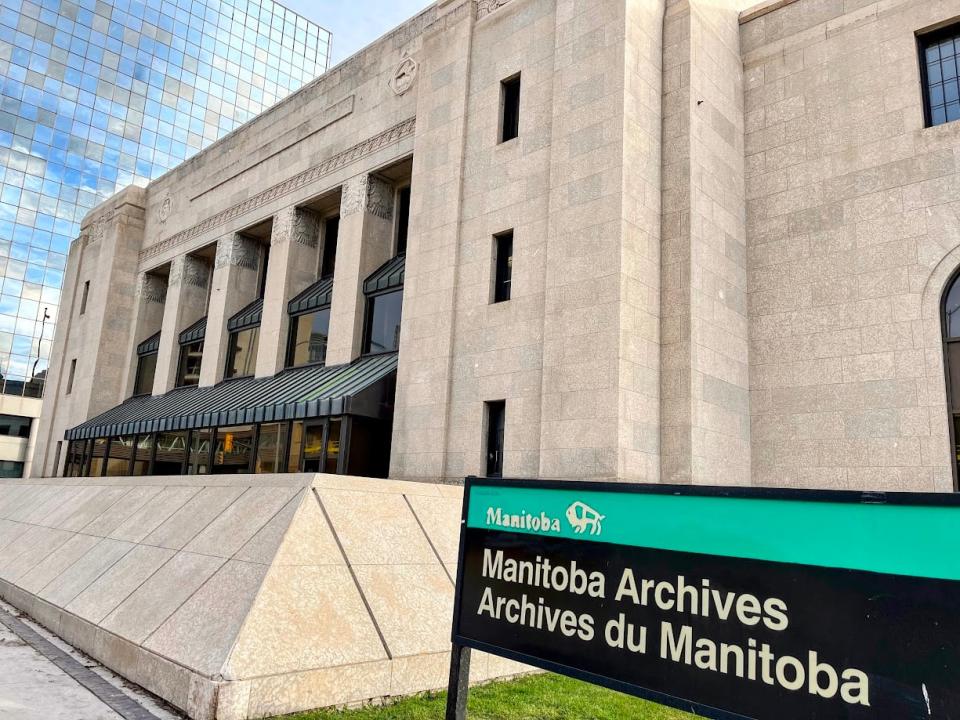Outdated, hurtful historical language now comes with a warning at Manitoba archival institutions

Archival organizations guard the historical record, protecting documents that detail the path society has travelled, but what happens when that content is rife with outdated terms and distasteful labels damaging to Indigenous people?
How do they move forward in a time of reconciliation when their duty is to preserve that past and make it publicly available?
With respect and collaboration, says Heather Bidzinski, head of archives and special collections at the University of Manitoba and chair of the Association for Manitoba Archives, which represents more than 50 archival repositories and associated organizations.
"No matter where you go, archives are going to carry the narrative of the dominant voice. In North America it's that of the colonizers, so the voices and the perspective you're going to hear are going to be those of the dominant narrative," she said.
"So as archives have travelled on their journey to learn how we can best respond to the calls to action [stemming from the Truth and Reconciliation Commission] and the calls for justice [from the national inquiry into missing and murdered Indigenous women and girls], one of the things that we recognize is that our narrative is unbalanced."

An undated photo from the University of Manitoba Archives, labelled as 'Eskimo sheik and his wife.' (University of Manitoba Archives and Special Collections/Nan Shipley fonds)
On the surface, the easiest solution would be to decolonize the language by replacing references to Eskimo with Inuit, and references to Indian or worse terminology, with First Nation or even specific cultural groups: Anishinaabeg, Cree, Oji-Cree, Dakota, Dene, Métis.
Part of that is already happening, Bidzinski says. The language used to describe the collections is updated.
But the materials themselves — documents, letters, reports — cannot be changed. That would tamper with the historical record, and expunging offensive terms would be a detrimental extreme, Bidzinski says.
"There's an element of importance in documenting that we, as human beings, did that. In our society, this happened. It's important not to lose that documentation of violence and aggression in our history," she said.
"We don't want to continue to contribute to the violence against Indigenous people or racialized people … [but] it's just as important, I think, for archives to see the path we've travelled in terms of making steps towards reconciliation."
To gird people for the fact they might still encounter repellent, even violent, language, archives have started to include warnings on their websites, such as this from the Manitoba Archives:
These records reflect the time period in which they were created and the views of their creators. This means that they can contain outdated, offensive and/or harmful language and content. We do not change the content or language in original records because these records serve as evidence of past actions and attitudes. This allows contemporary users of the archives to assess and question the original records and the context of their creation. However, we acknowledge the harmful impact that this language and content continue to have and we strive to address this harm by revising outdated descriptions, amending listings to include contemporary language, and seeking feedback from archives users to identify problematic language.
"By letting people know that there's harmful language, it reduces the chances of re-traumatizing users," Bidzinski said. "The archival record itself is not changing … because people may still use those terms to search for content."

The Archives of Manitoba and other archival institutions in the province have posted warnings on their websites to warn users that they might encounter offensive and/or harmful language and content, and why the archives have chosen to leave things that way. (Darren Bernhardt/CBC)
Sandra Krahn, executive director of the Manitoba Association for Rights and Liberties, fully supports the decision to retain the historical record as it is.
"We have to be true to our history. It's not a good history, it's not a pretty history, but this is our history and it has shaped all Canadians. It's shaped all of our communities," she said.
"And if we were to change the terminology, then the question is change it to what? Terms that are being used, the ways that communities are identifying, are continually continually changing and growing and evolving. Who would get to choose what the terms would be?"
'A history of women that's missing'
Krahn's family has been affected by the settler attitude that viewed Indigenous people as second-class citizens and led not only to contemptuous labels but neglect.
"I'm actually Métis but I didn't know that until I was an adult. There were people in my mother's family that hid that part of our history in order to provide their children the opportunity to go to a school that was safe, and to have the opportunity to kind of pursue further education," she said.
"How indigenous people have been treated and described and discussed and controlled has impacted my life in that I'm still in the process of learning about my own family history."
And that's not easy, as Krahn has discovered during ancestry research in the Manitoba Archives.
"You can get the names of men, you can get names of children, but often there would be just 'native woman.' There's a history of women that's missing."
Krahn would like the archives to pursue oral histories "that are still very much alive" within those underrepresented communities, to include the ignored perspective.
"I think that would provide an authentic counter-narrative," she said.
"A lot of the recommendations of the TRC's calls to action include education, include providing opportunities for people to understand our history from a number of different perspectives."
Bidzinksi says that type of collaboration is exactly what she is pursuing.
"One of the things that we are going to work toward is working with community members to identify content that is relevant to their communities, to their specific nations," she said, adding she also consults directly with leaders from affected communities when sensitive content is acquired by the U of M archives.
That gives them a voice in determining whether the public should have access to that material, and how it should be described.
"It's moving away from a silo approach to understanding there are experts in the community and going forward in a good way by working in respectful collaboration."
There's still much that needs to be done to atone for the past, but working with the communities to determine how to contextualize it "is a really important step," Bidzinski said.

